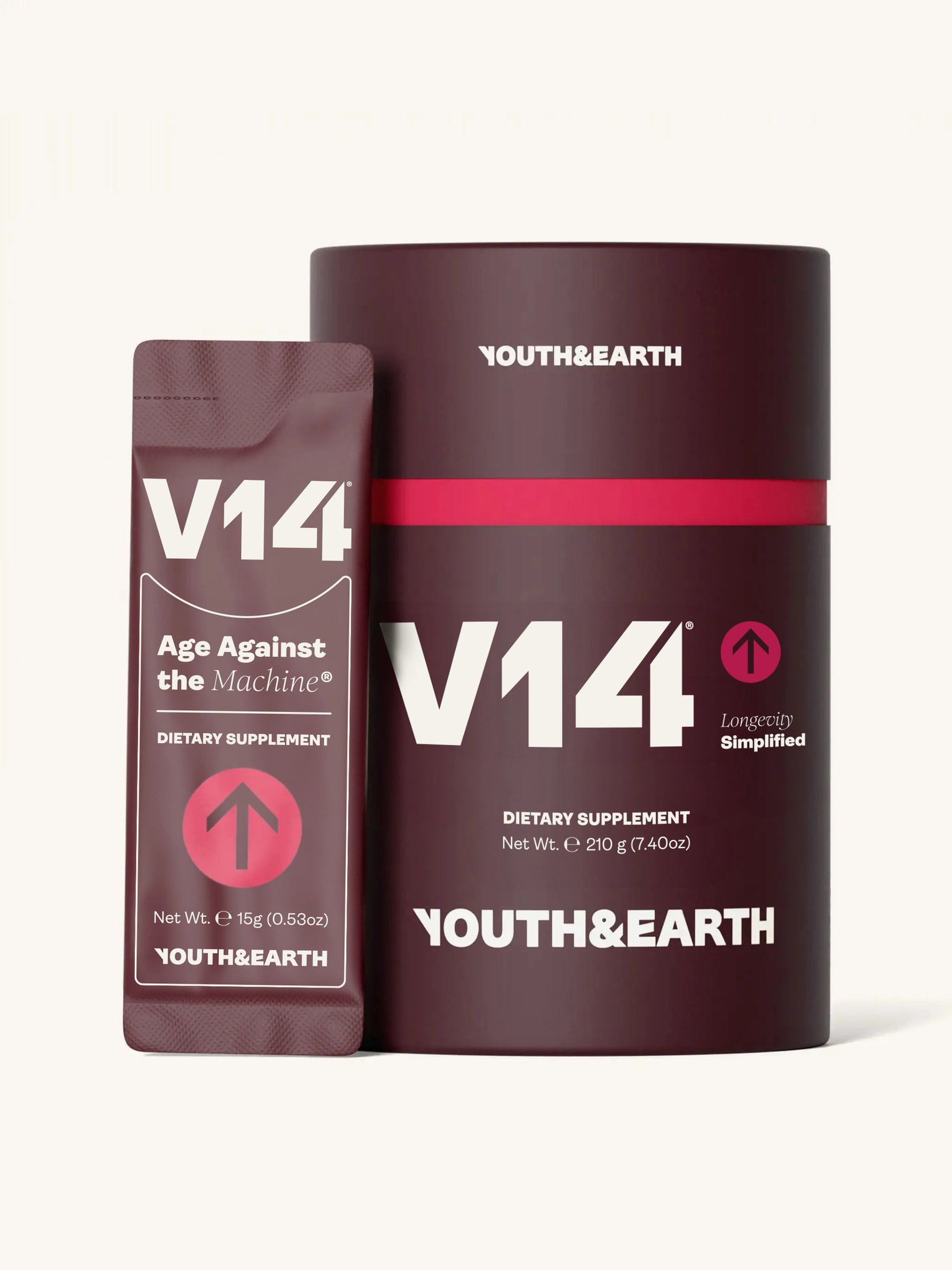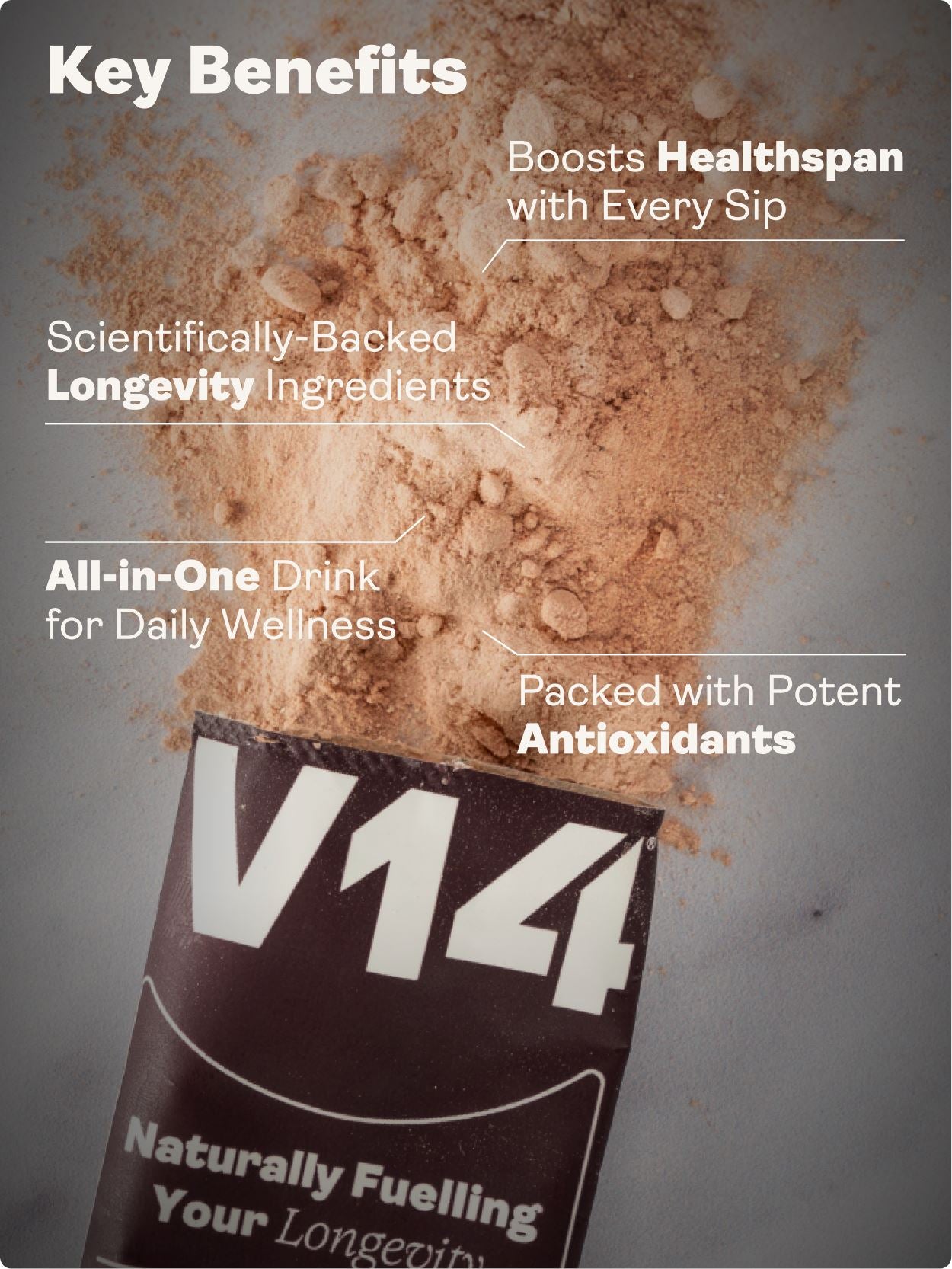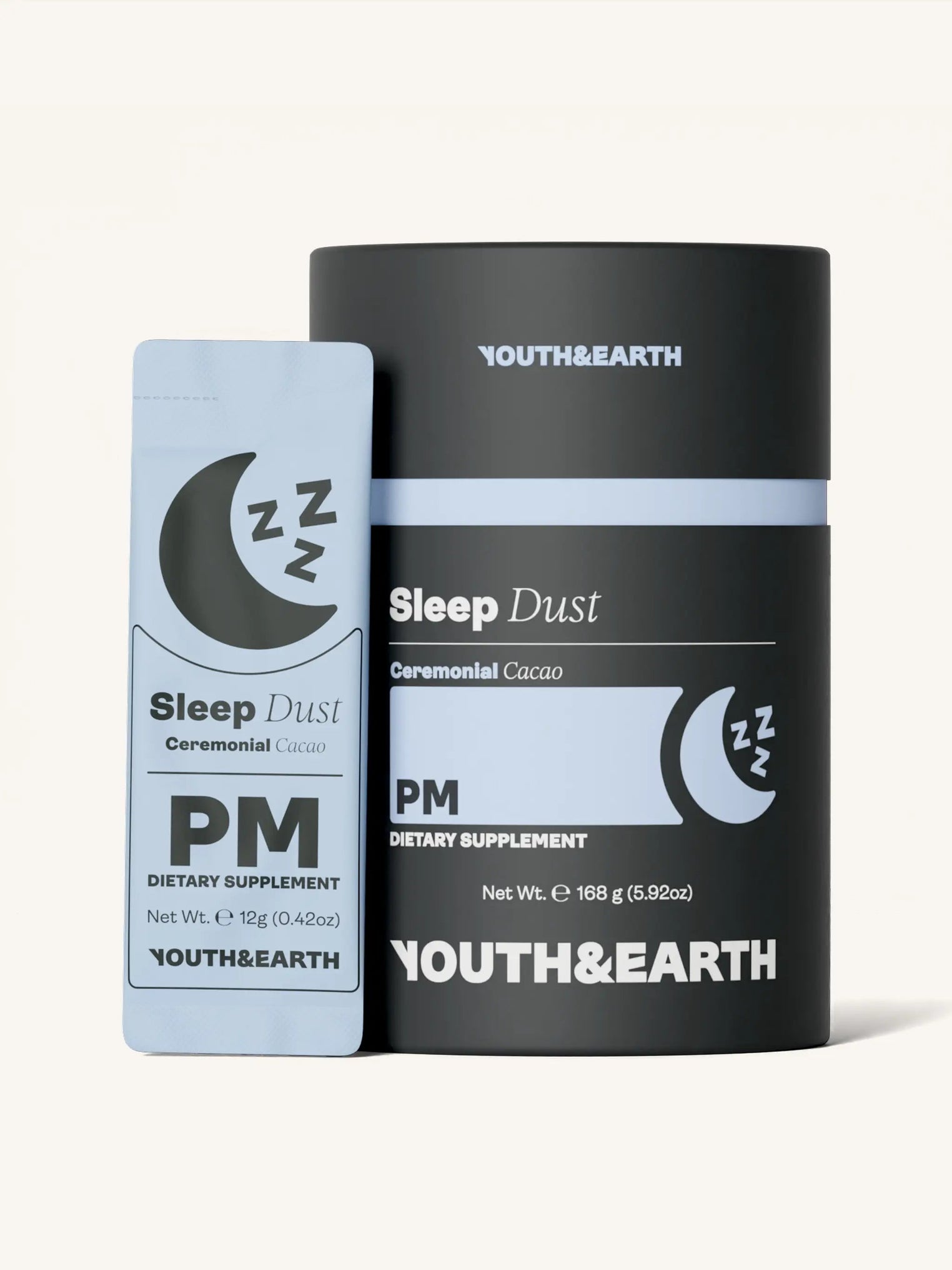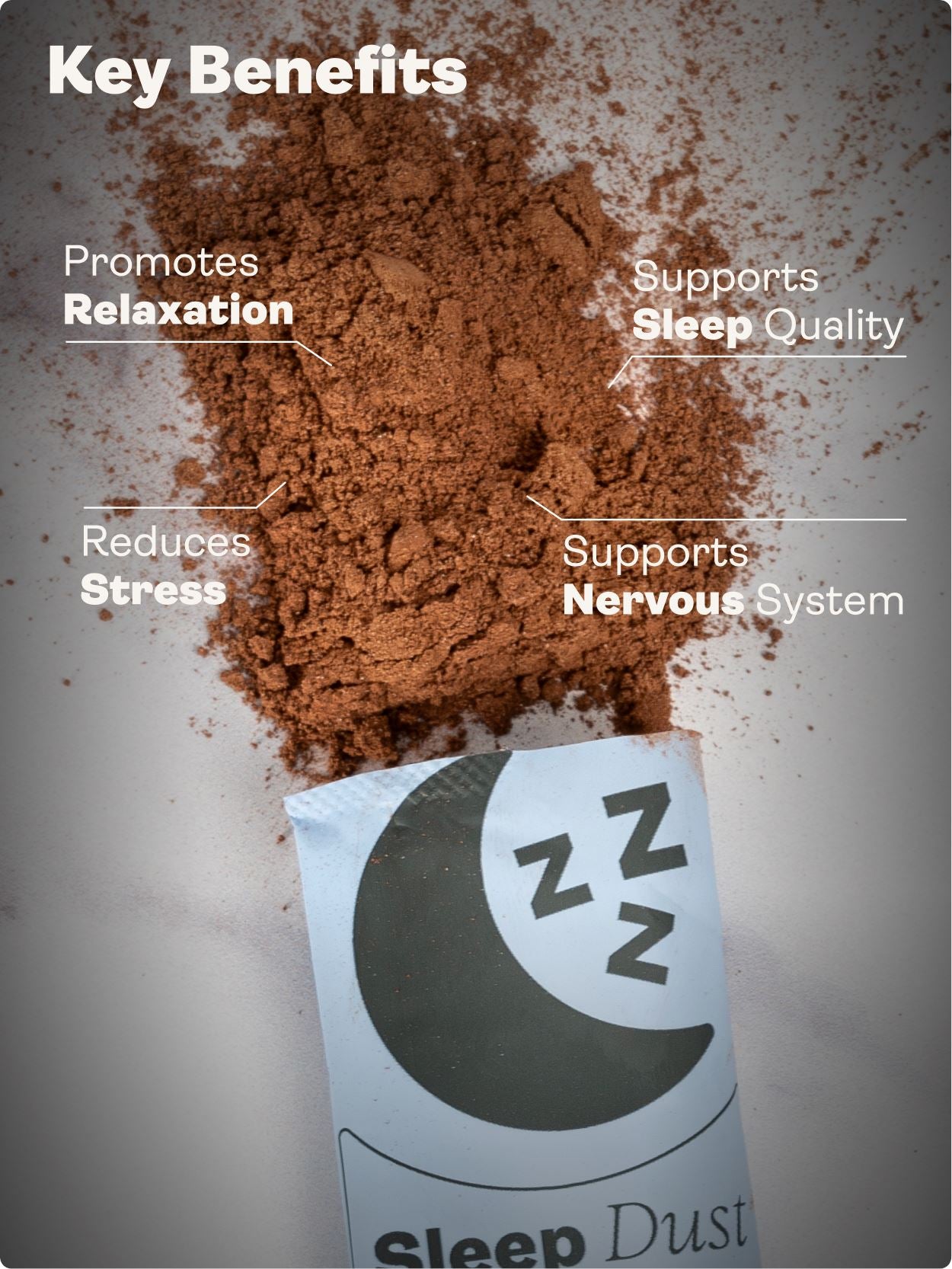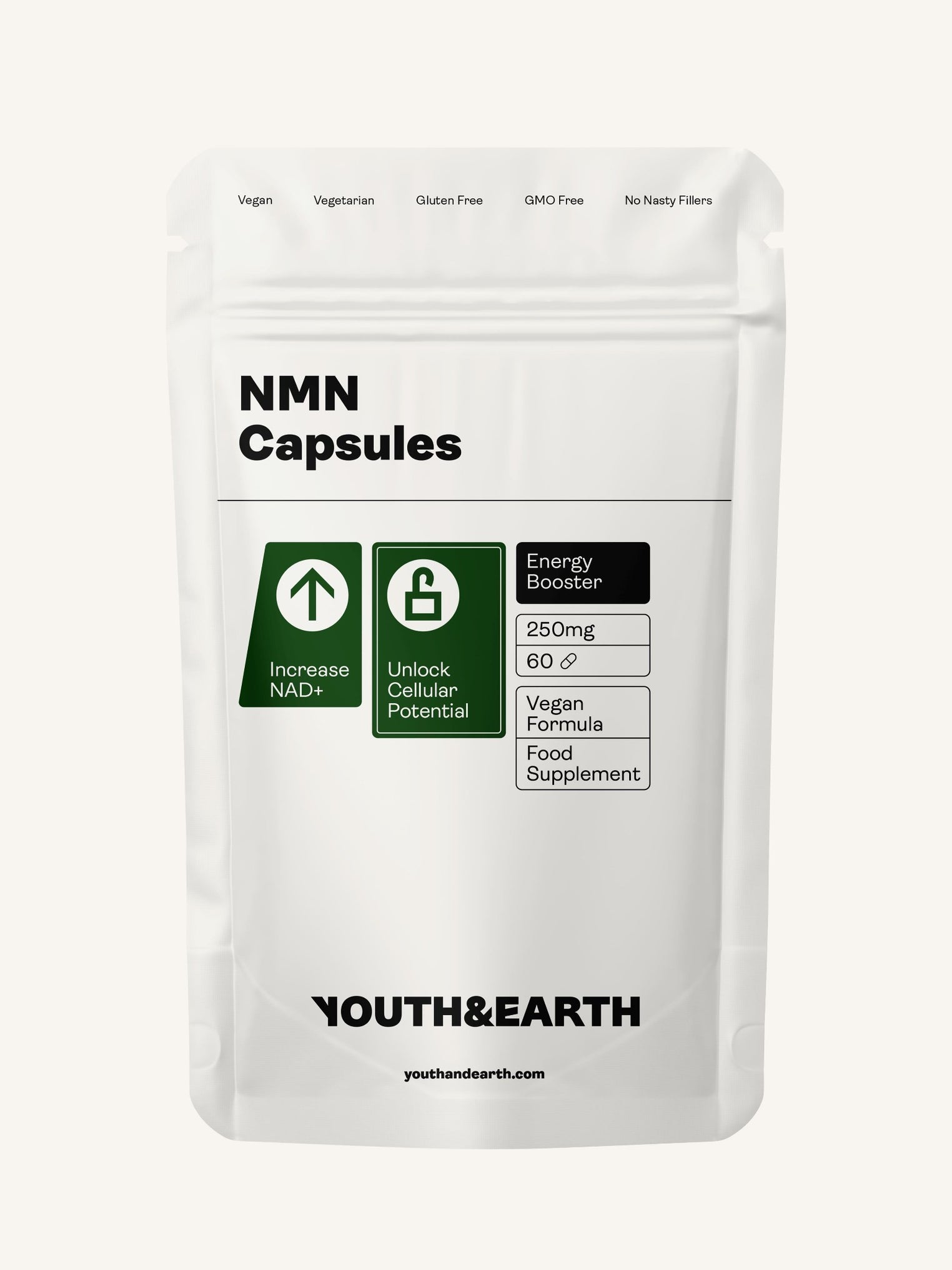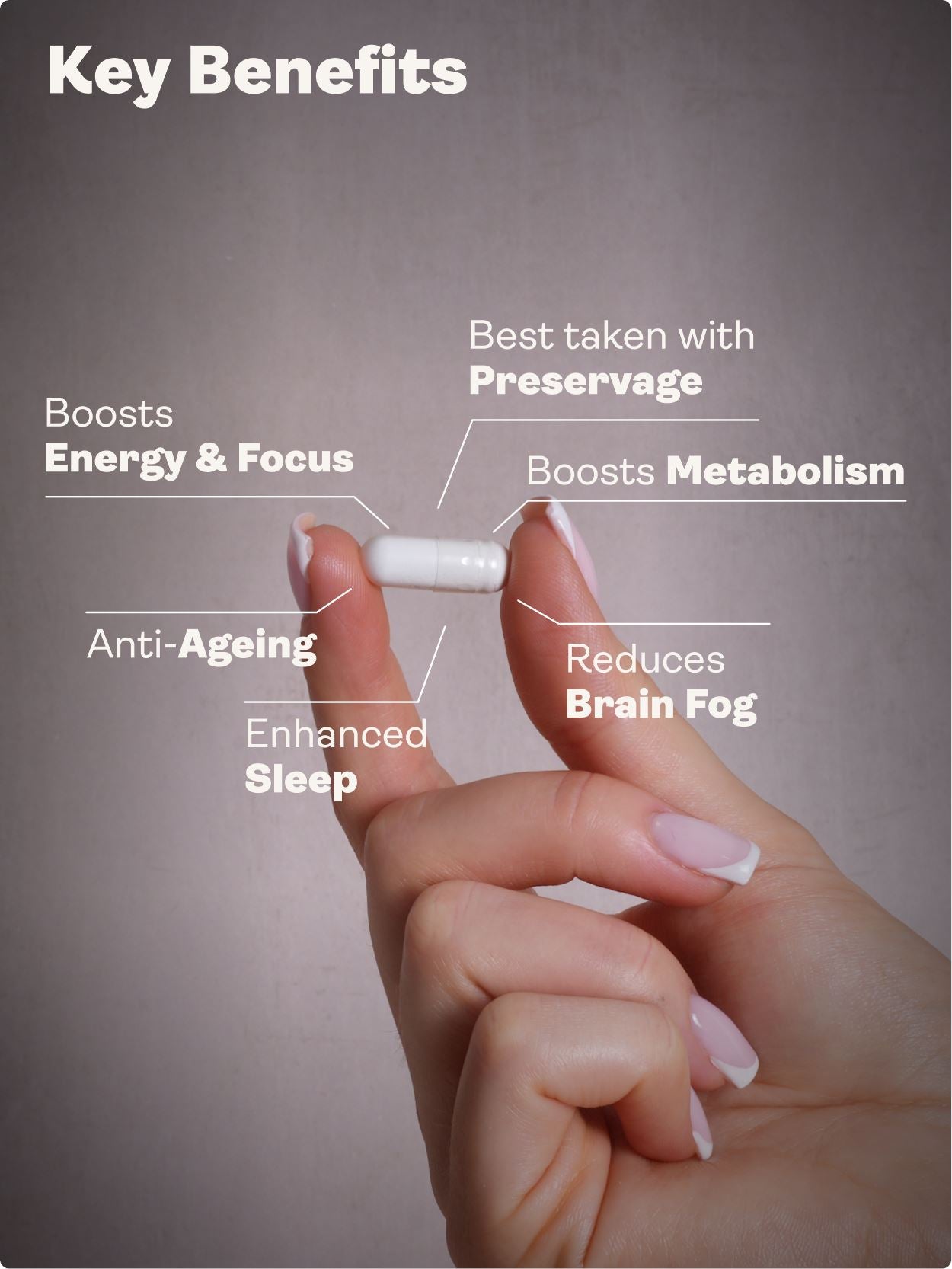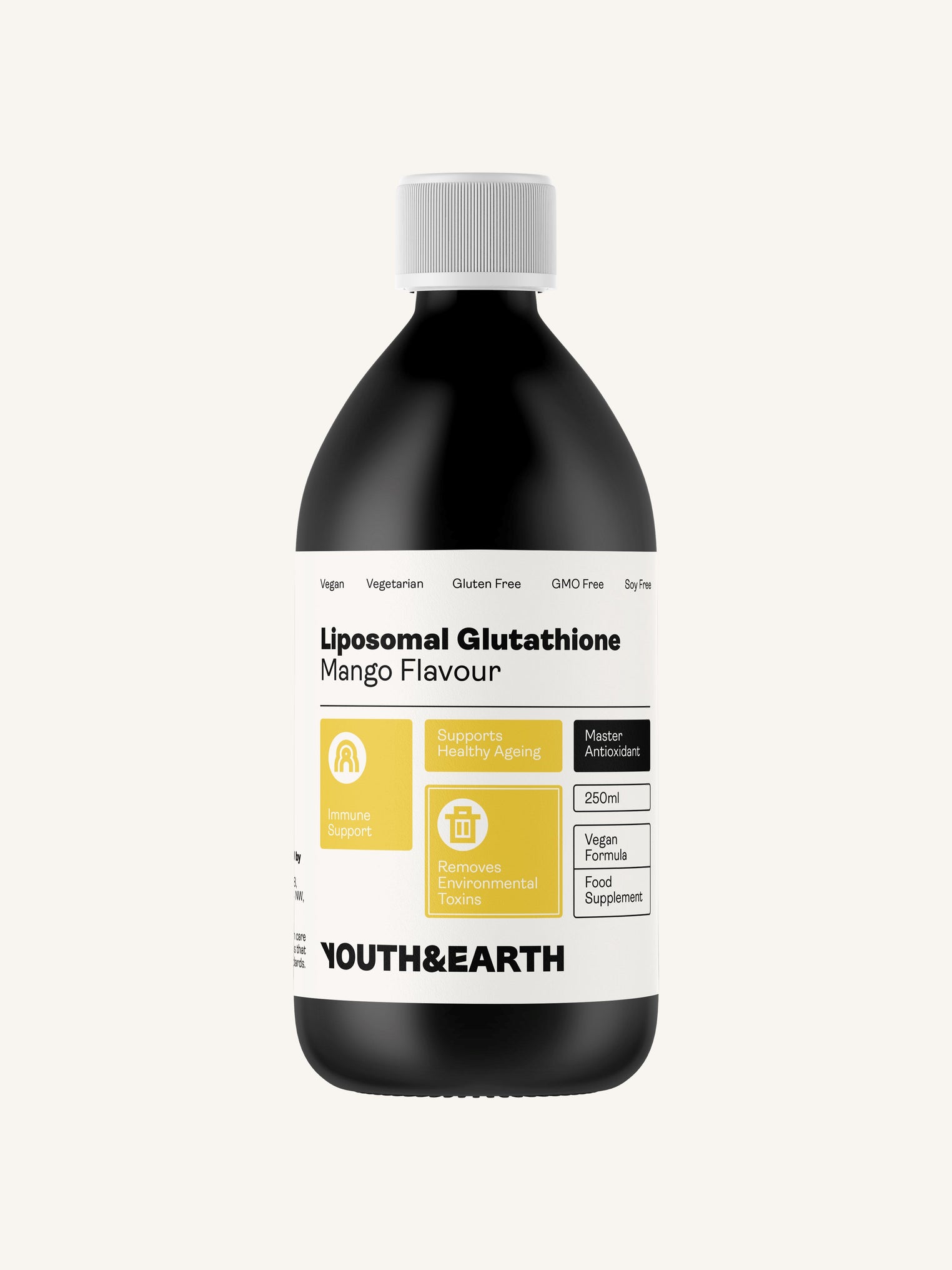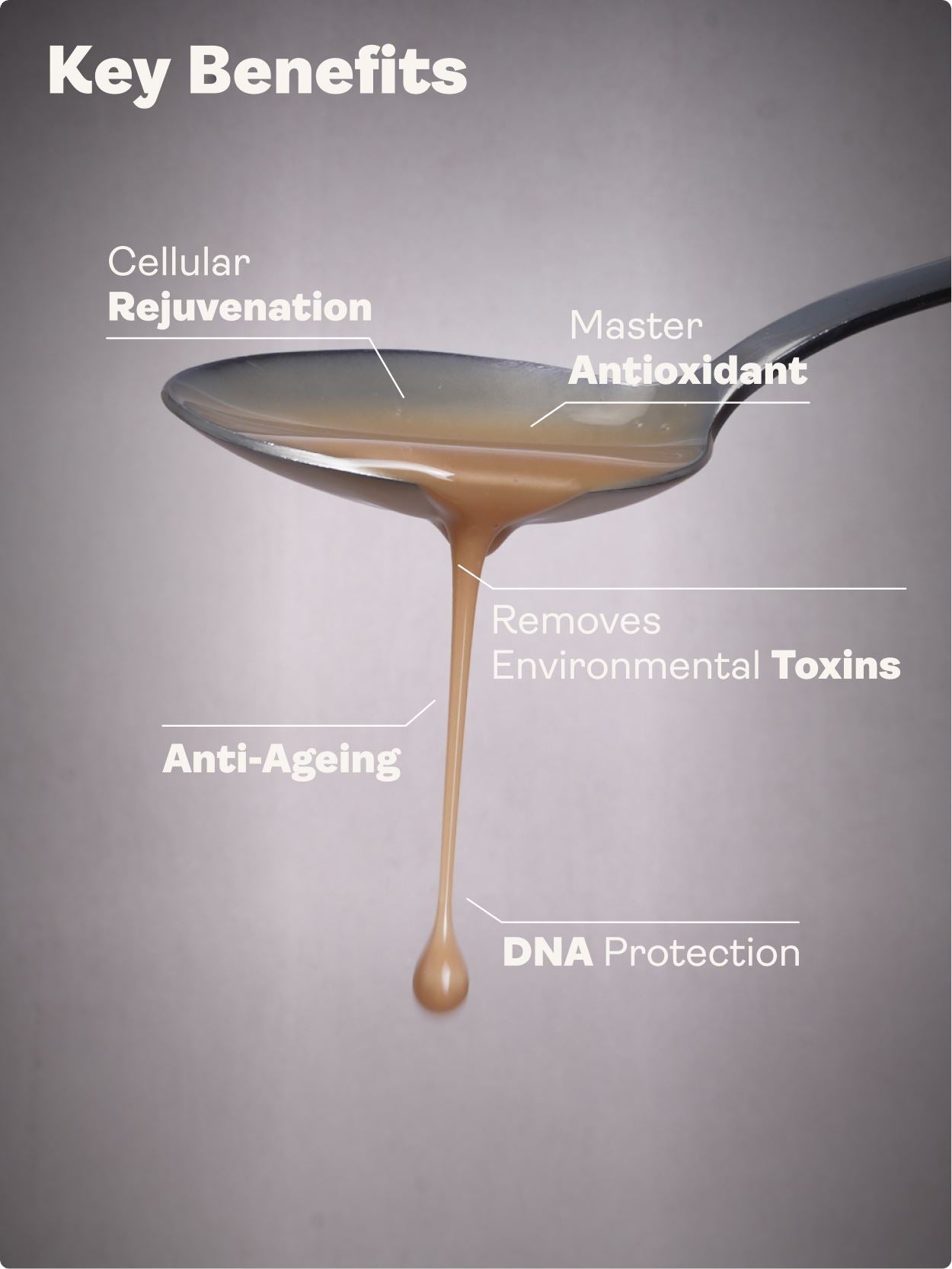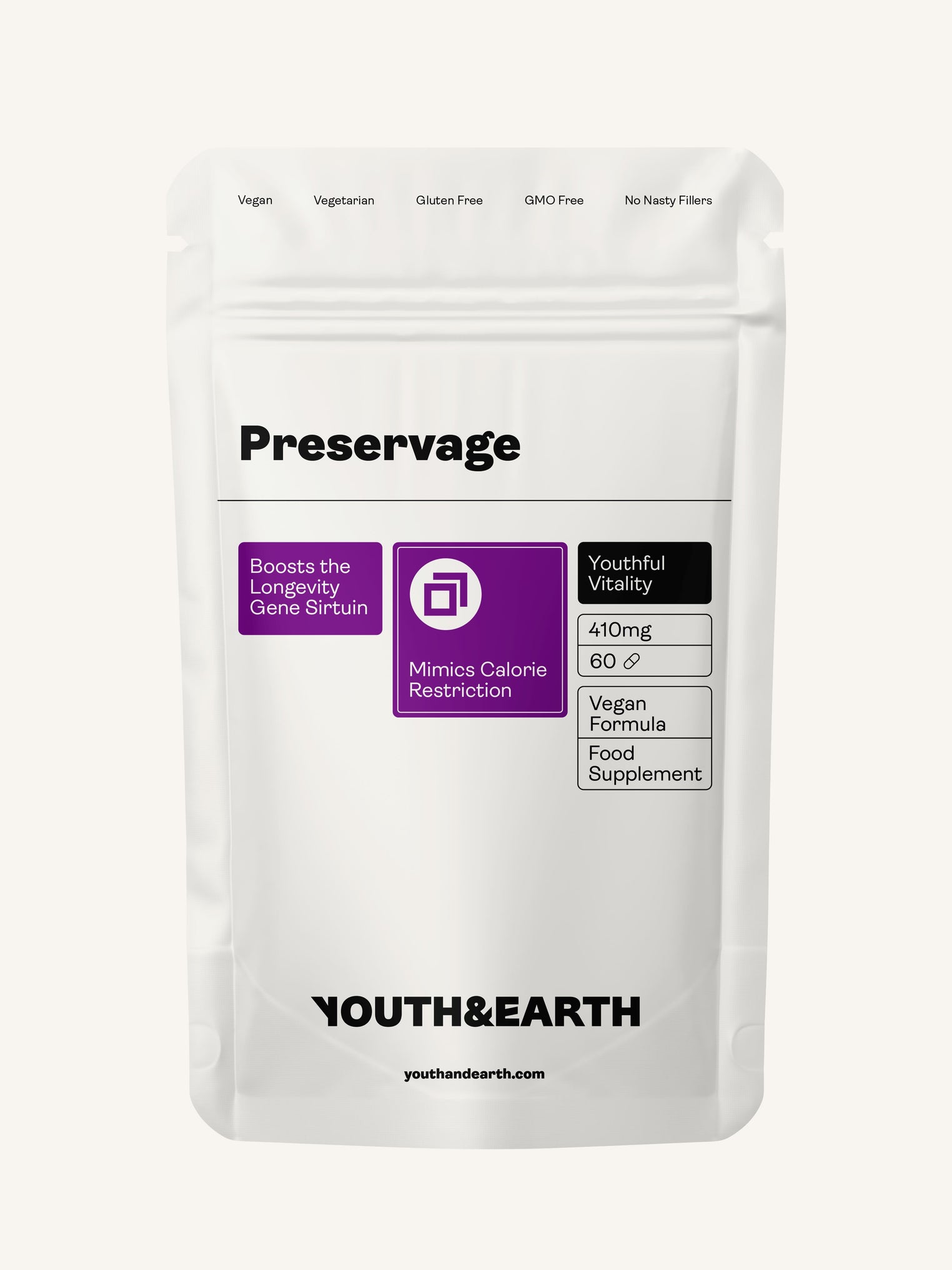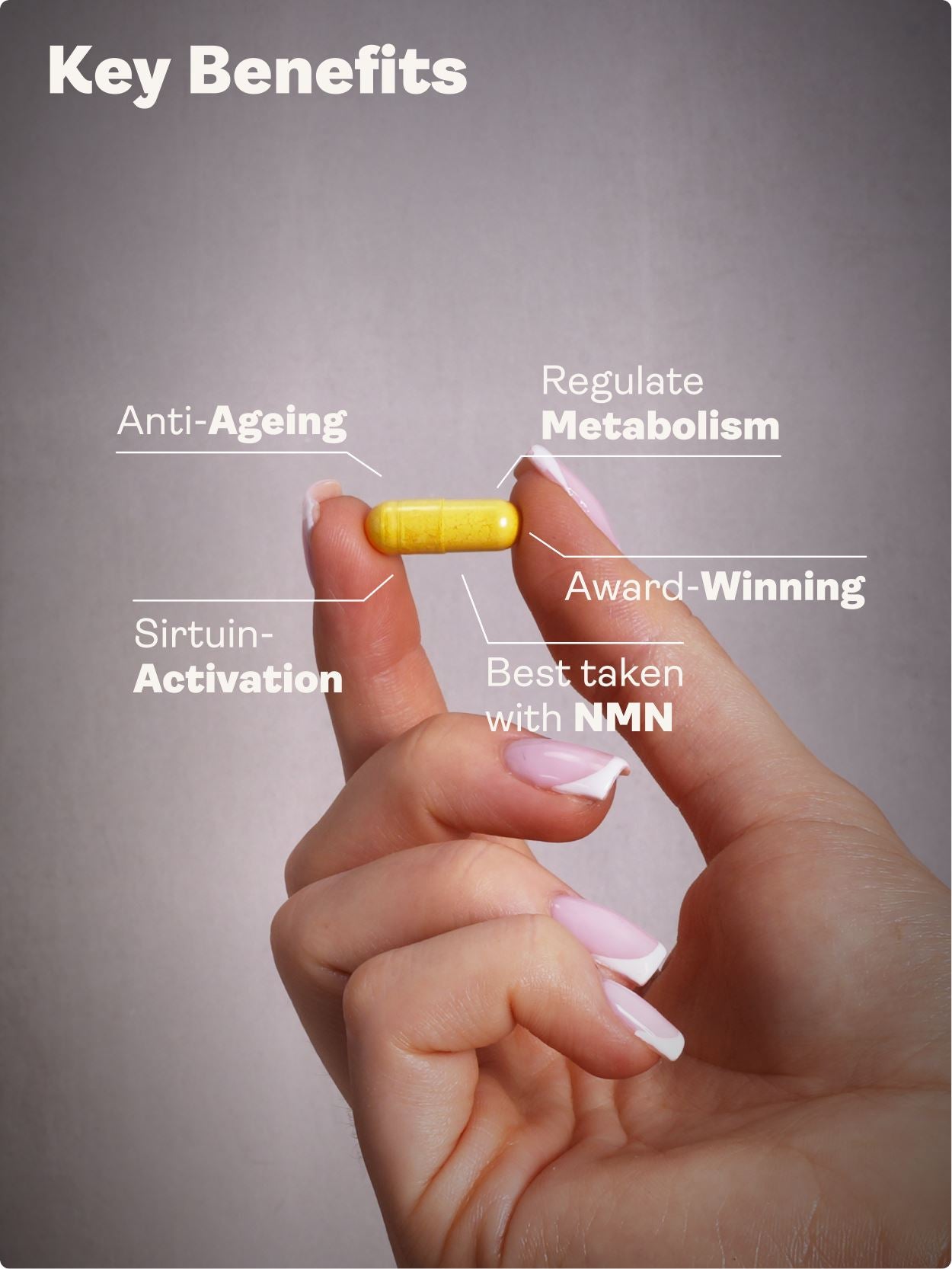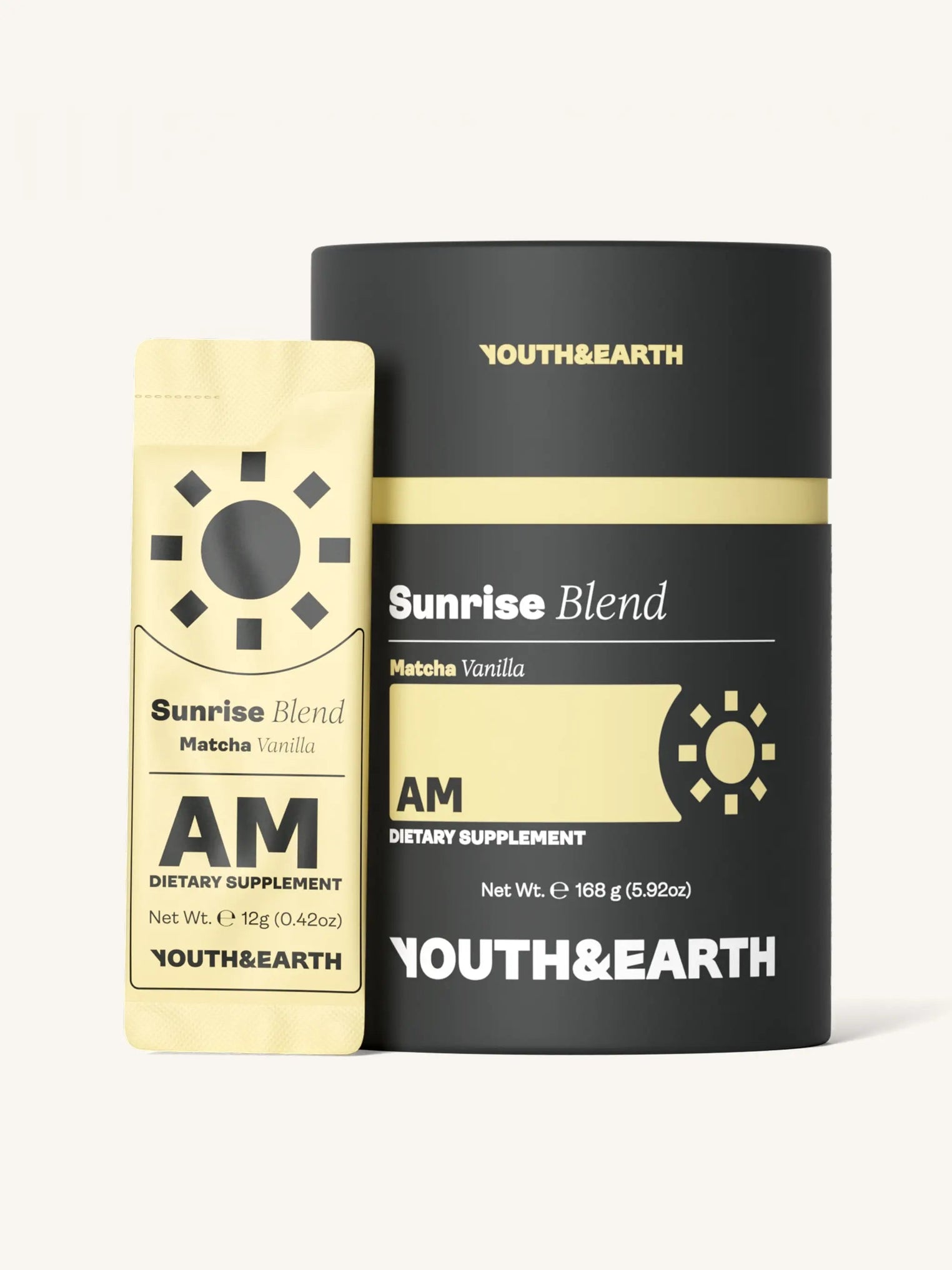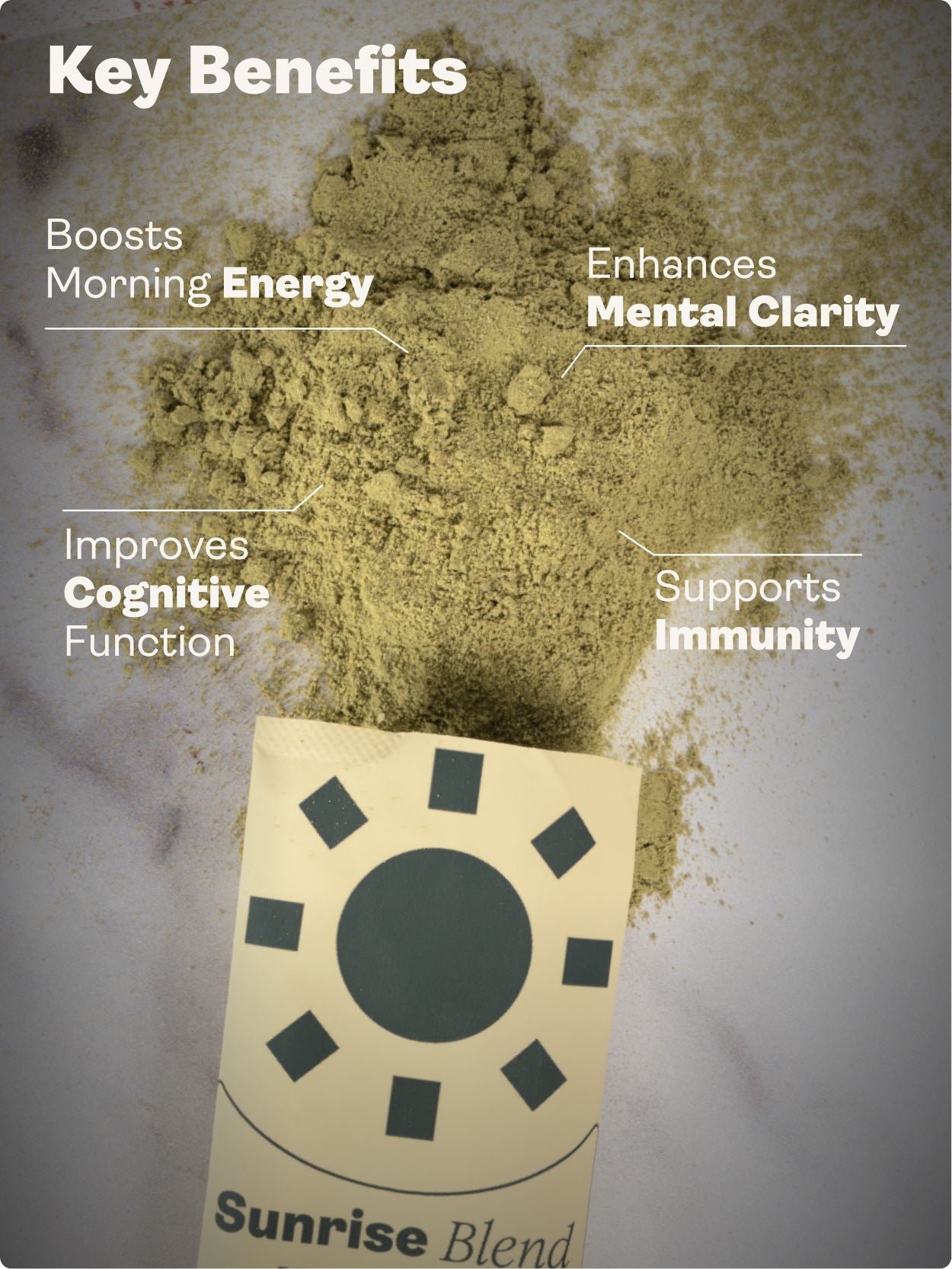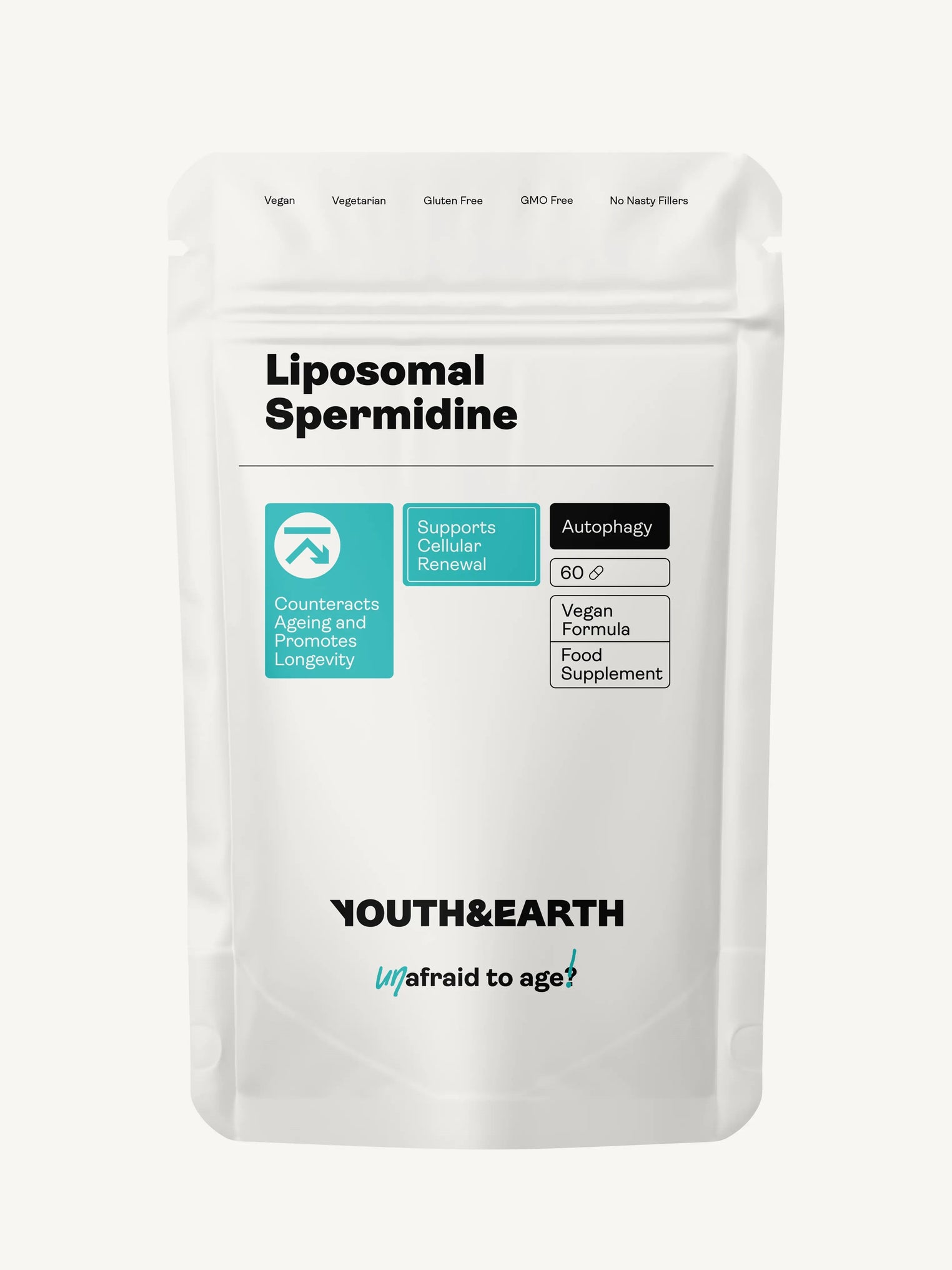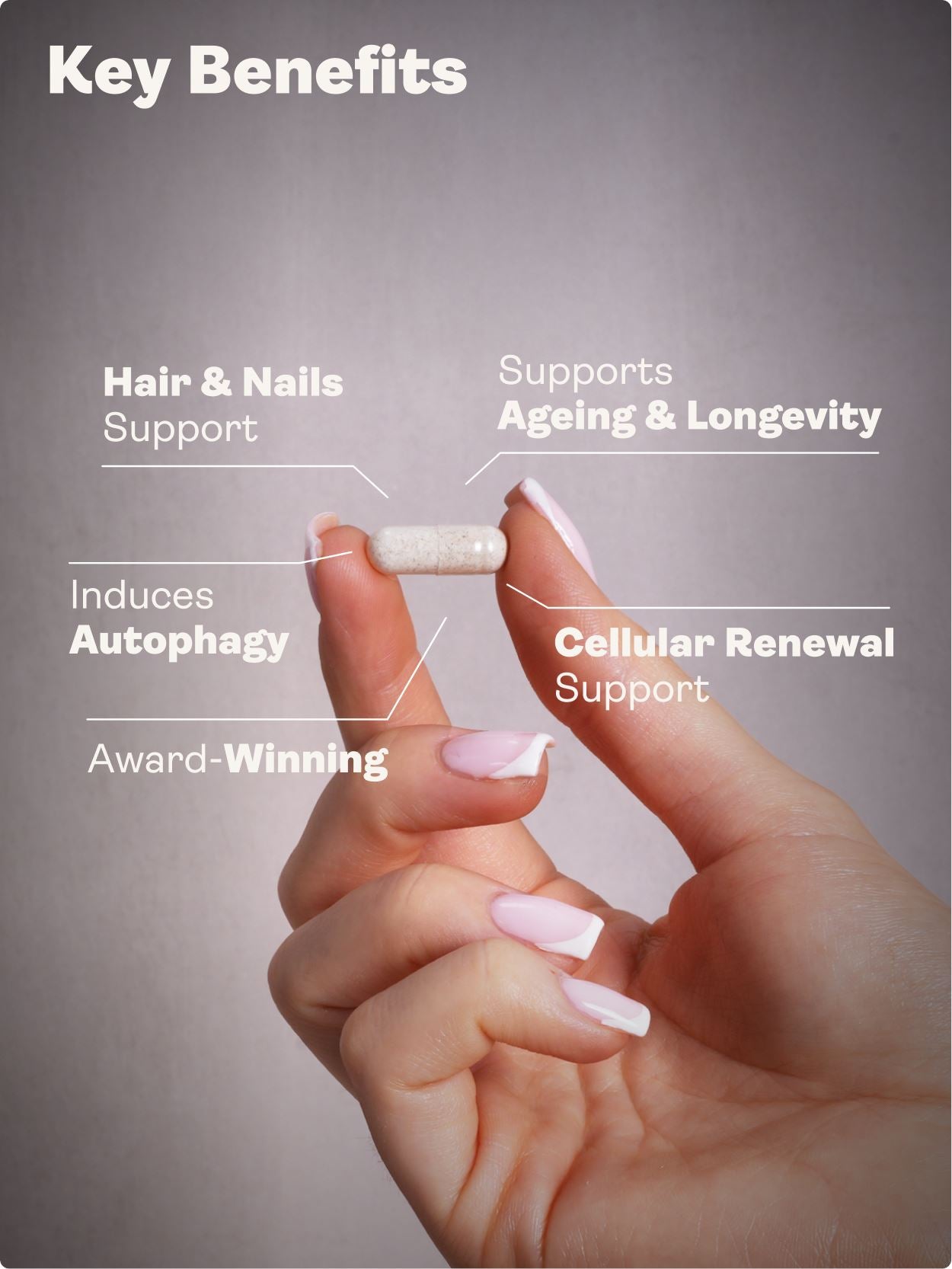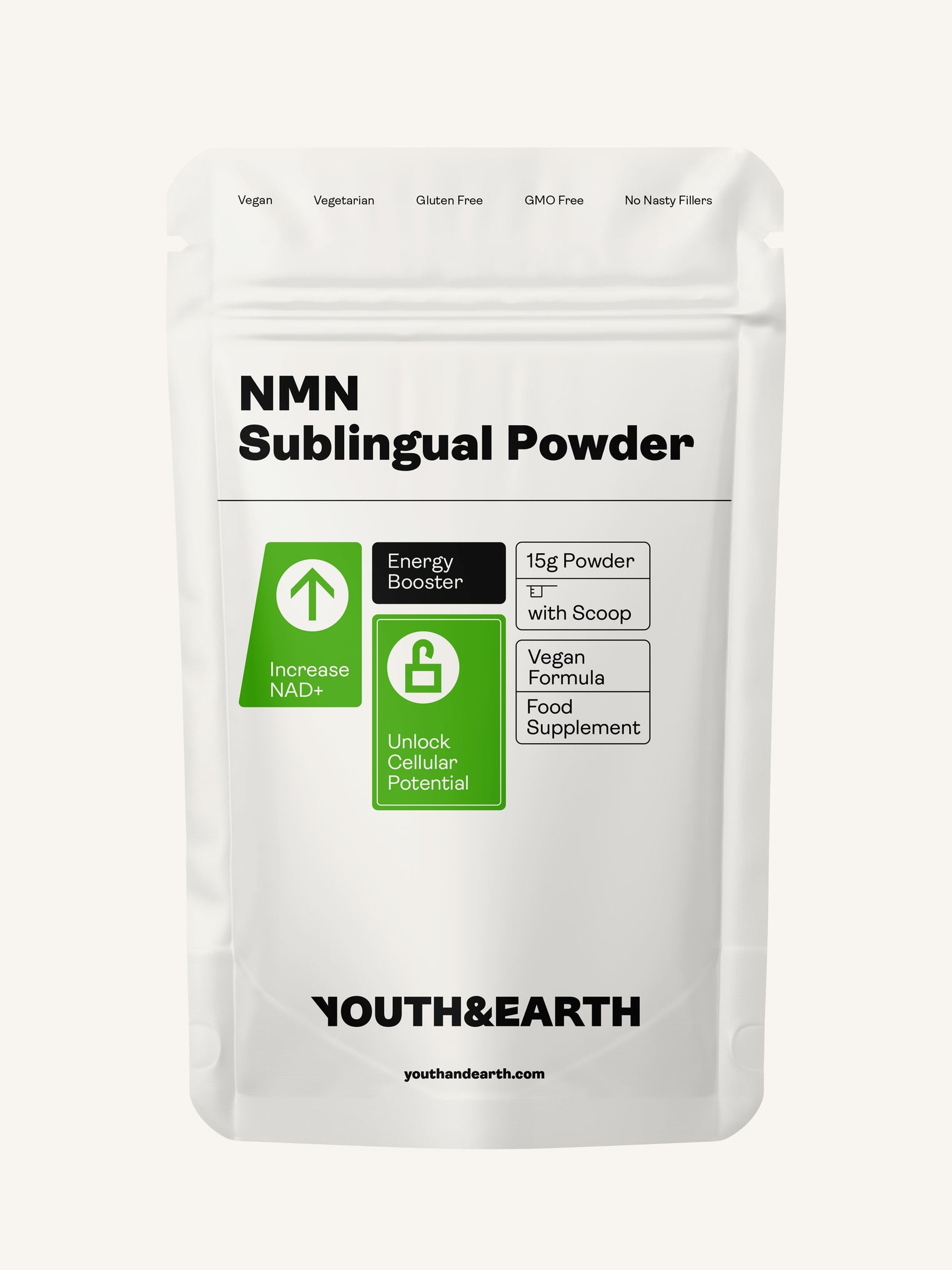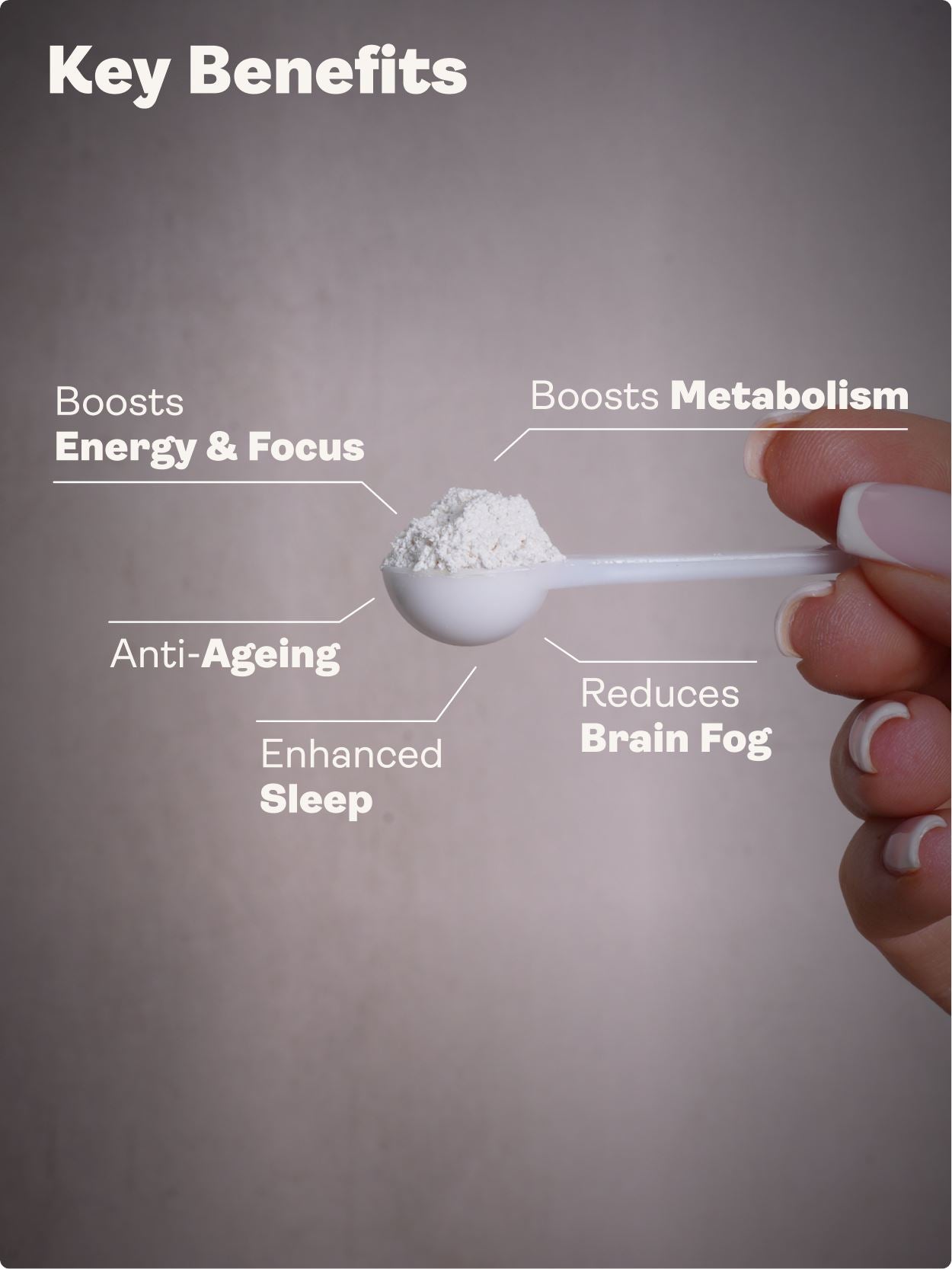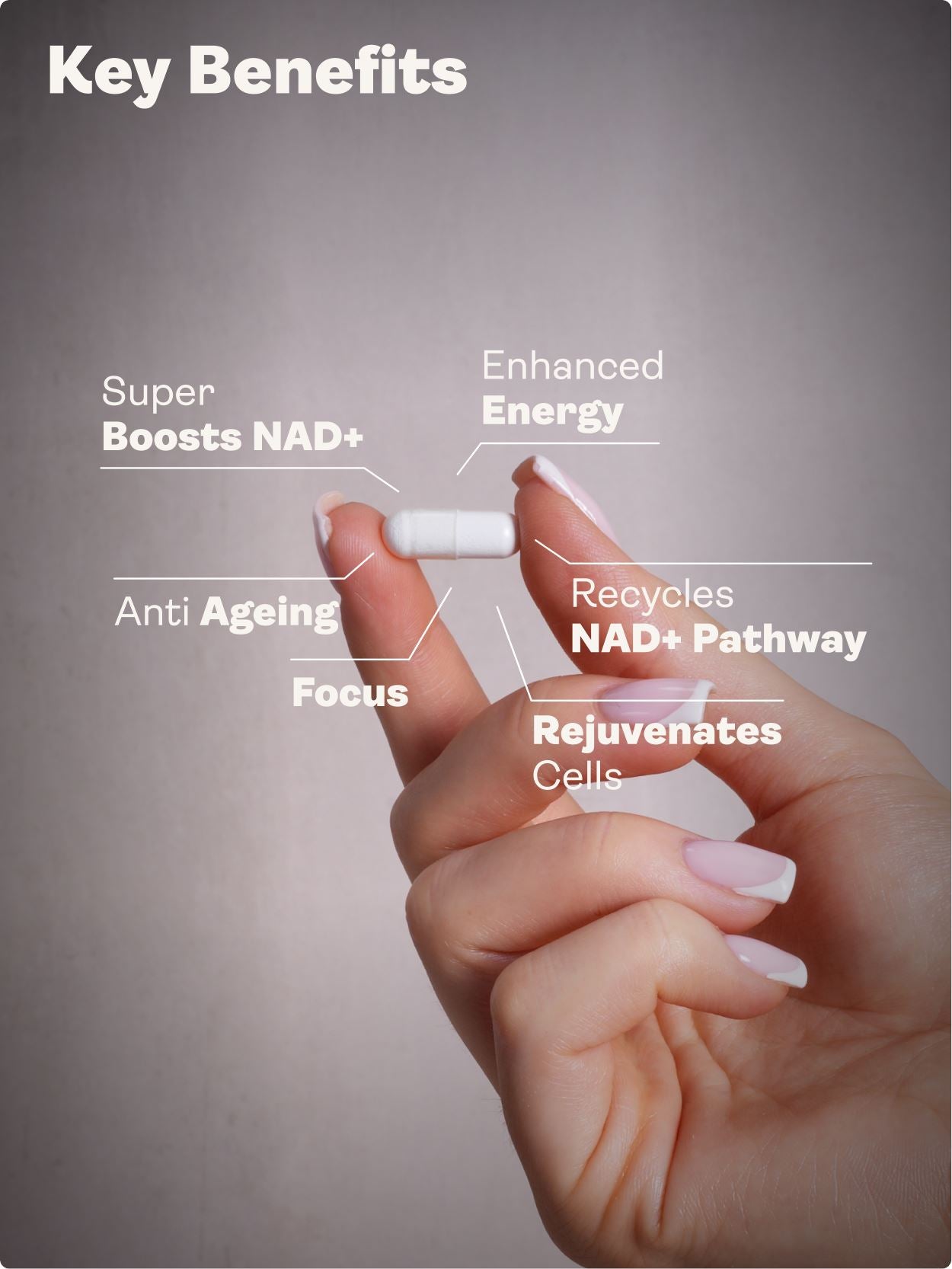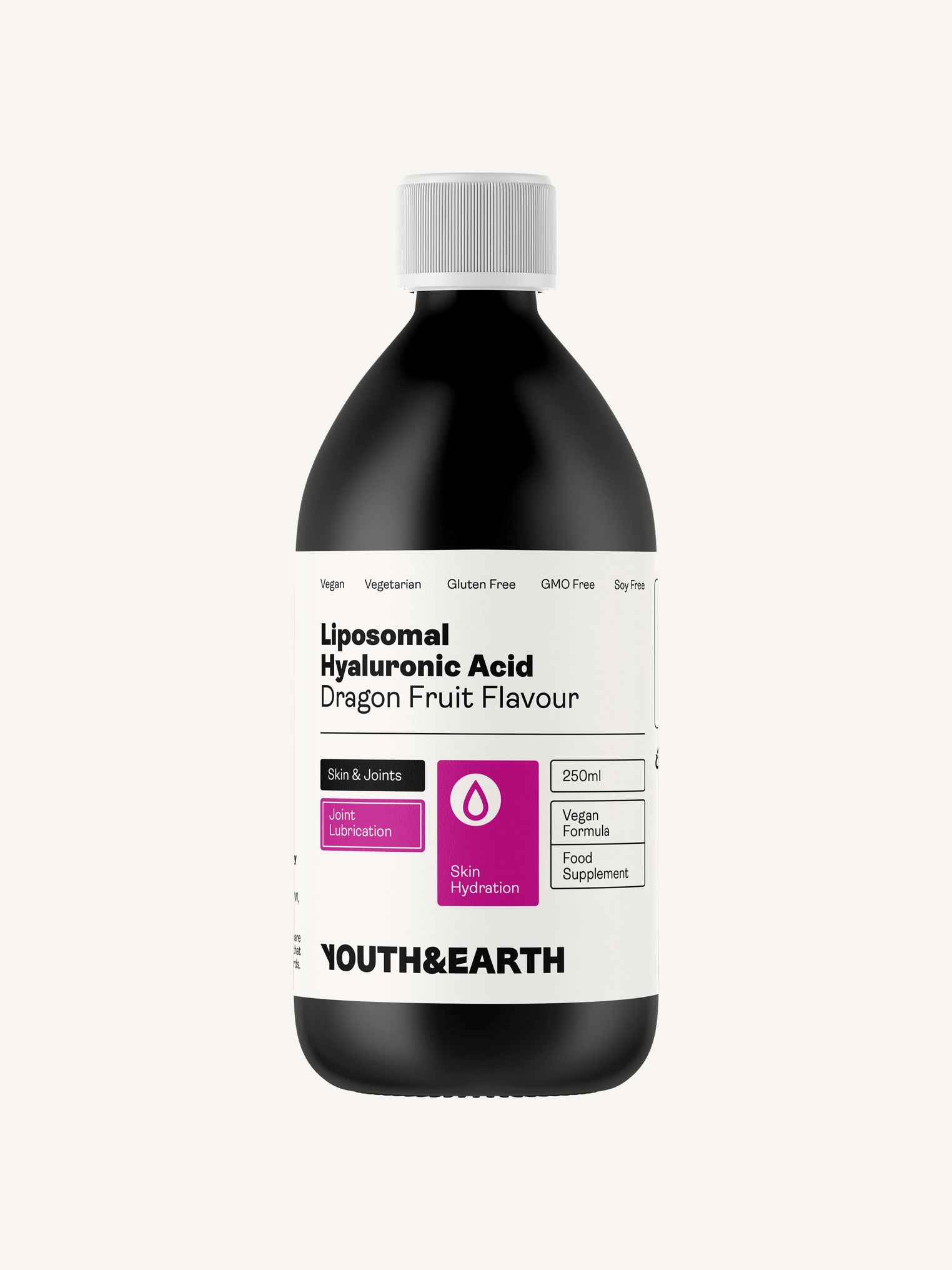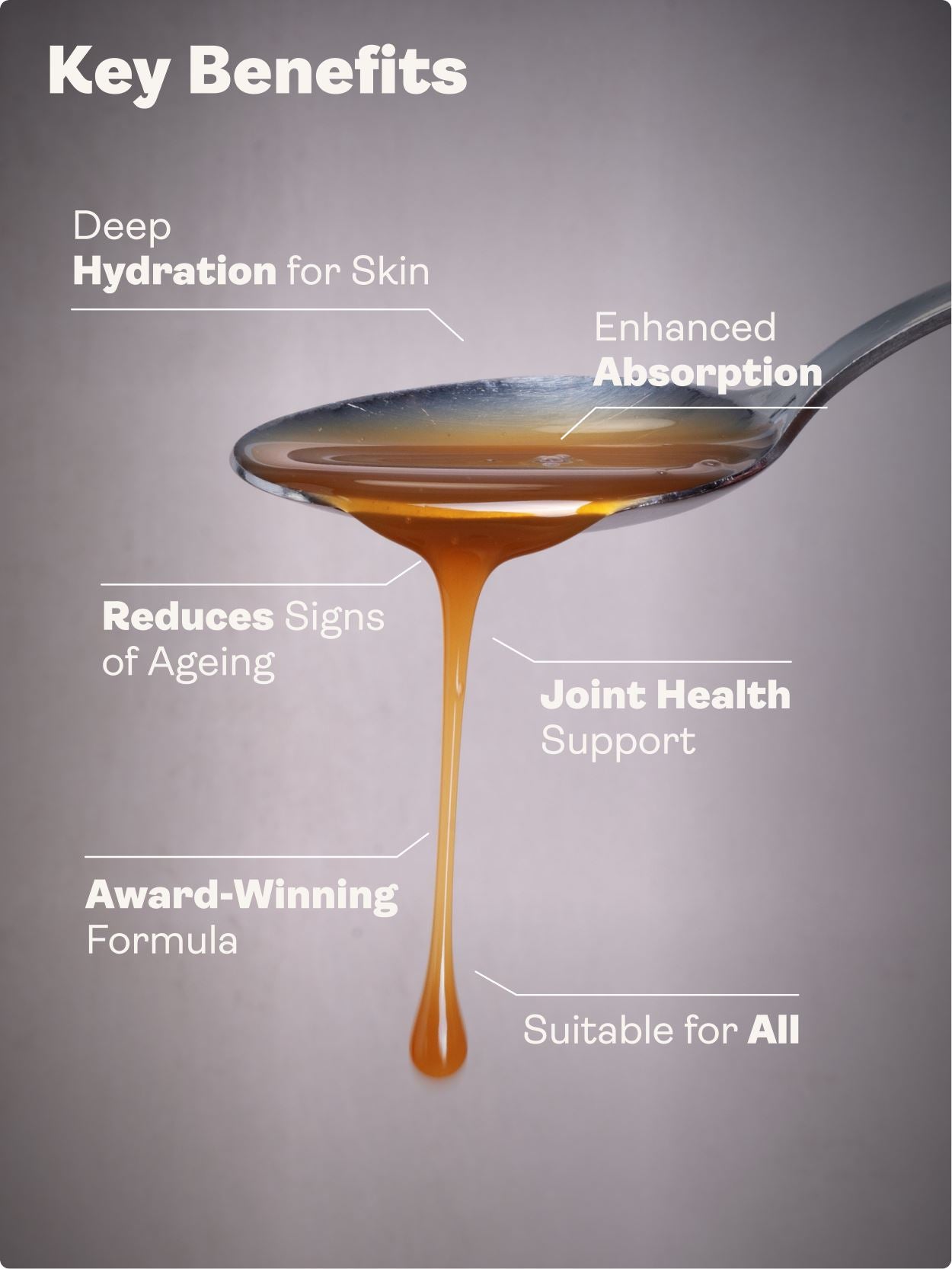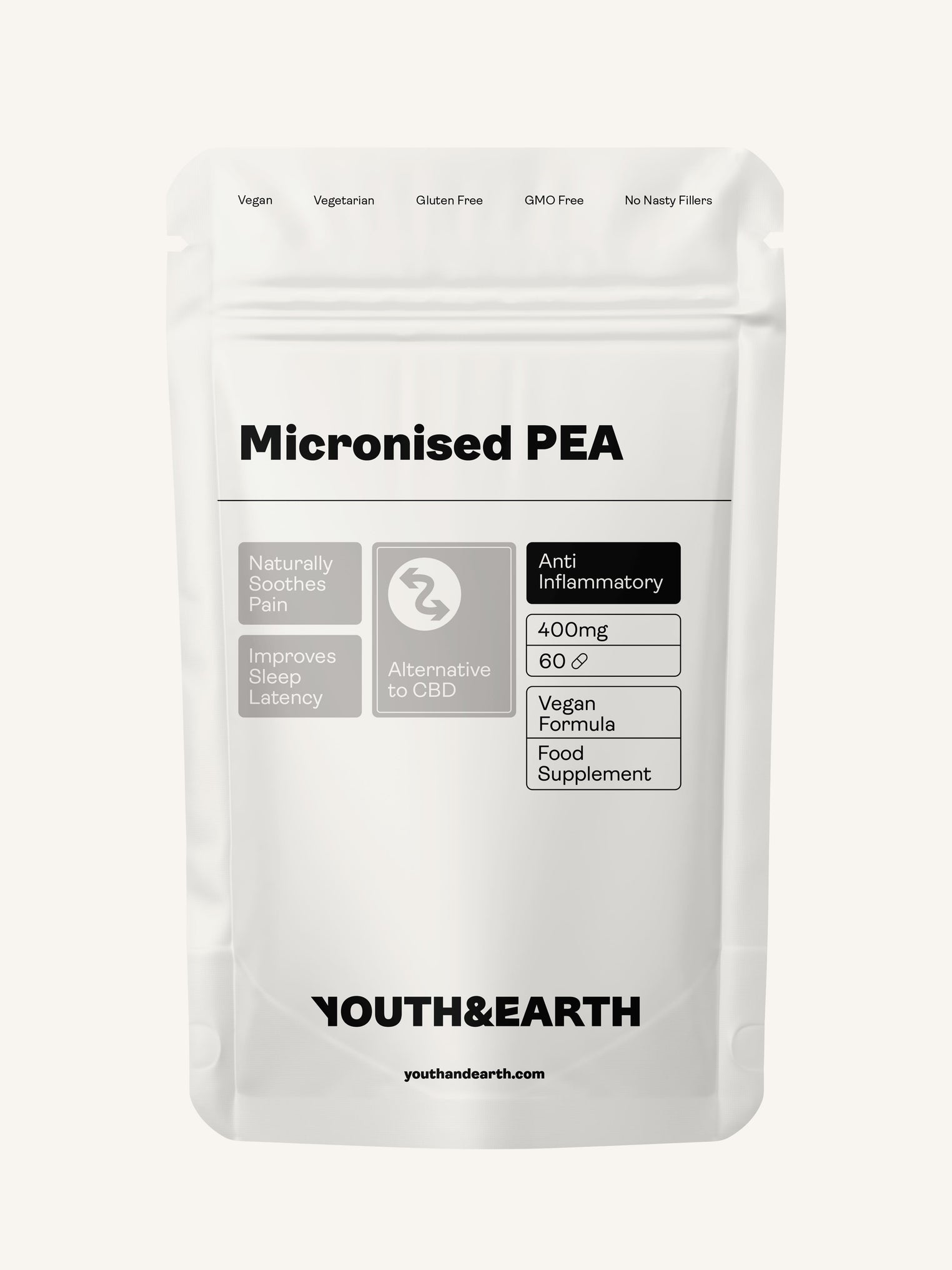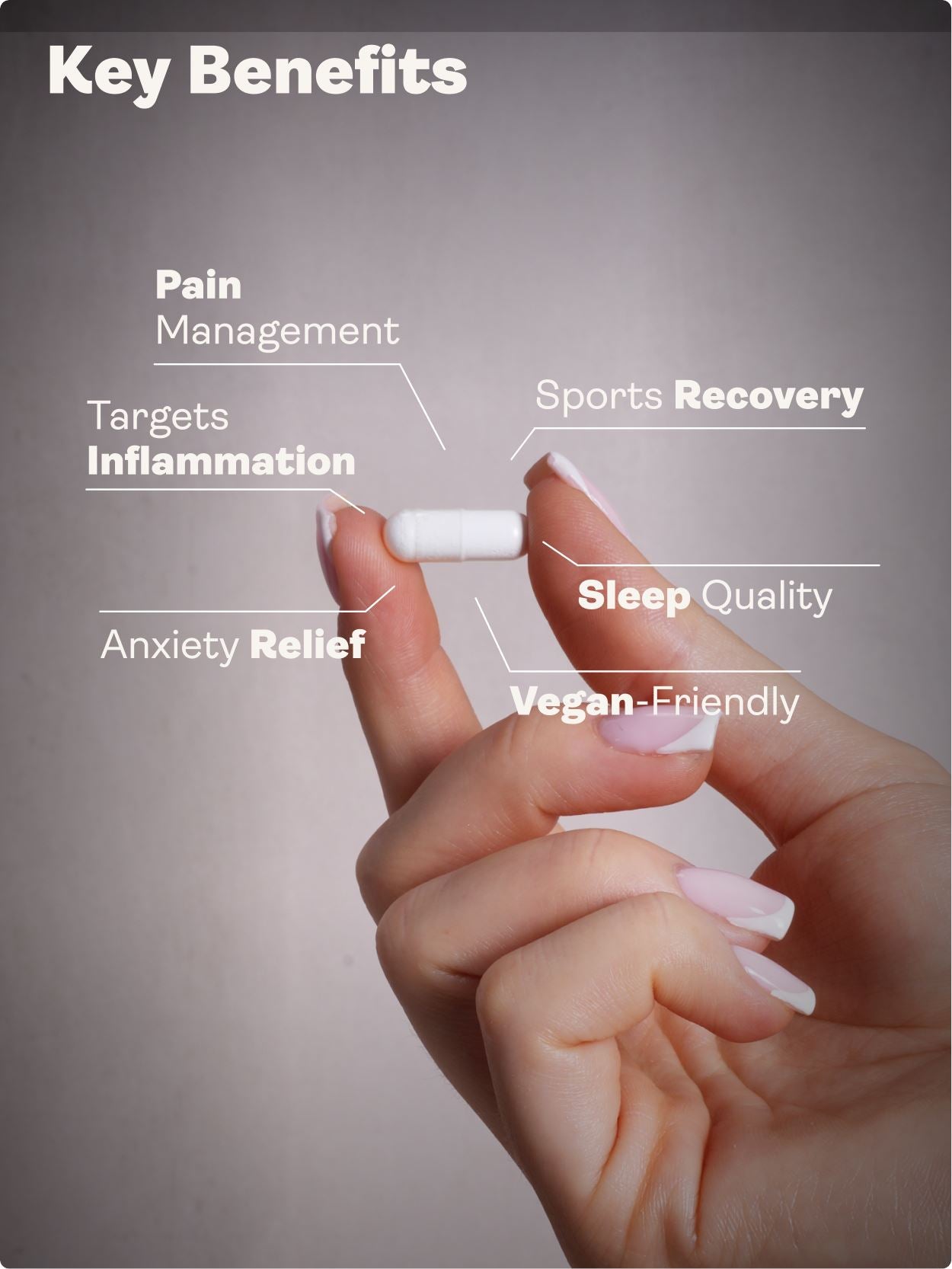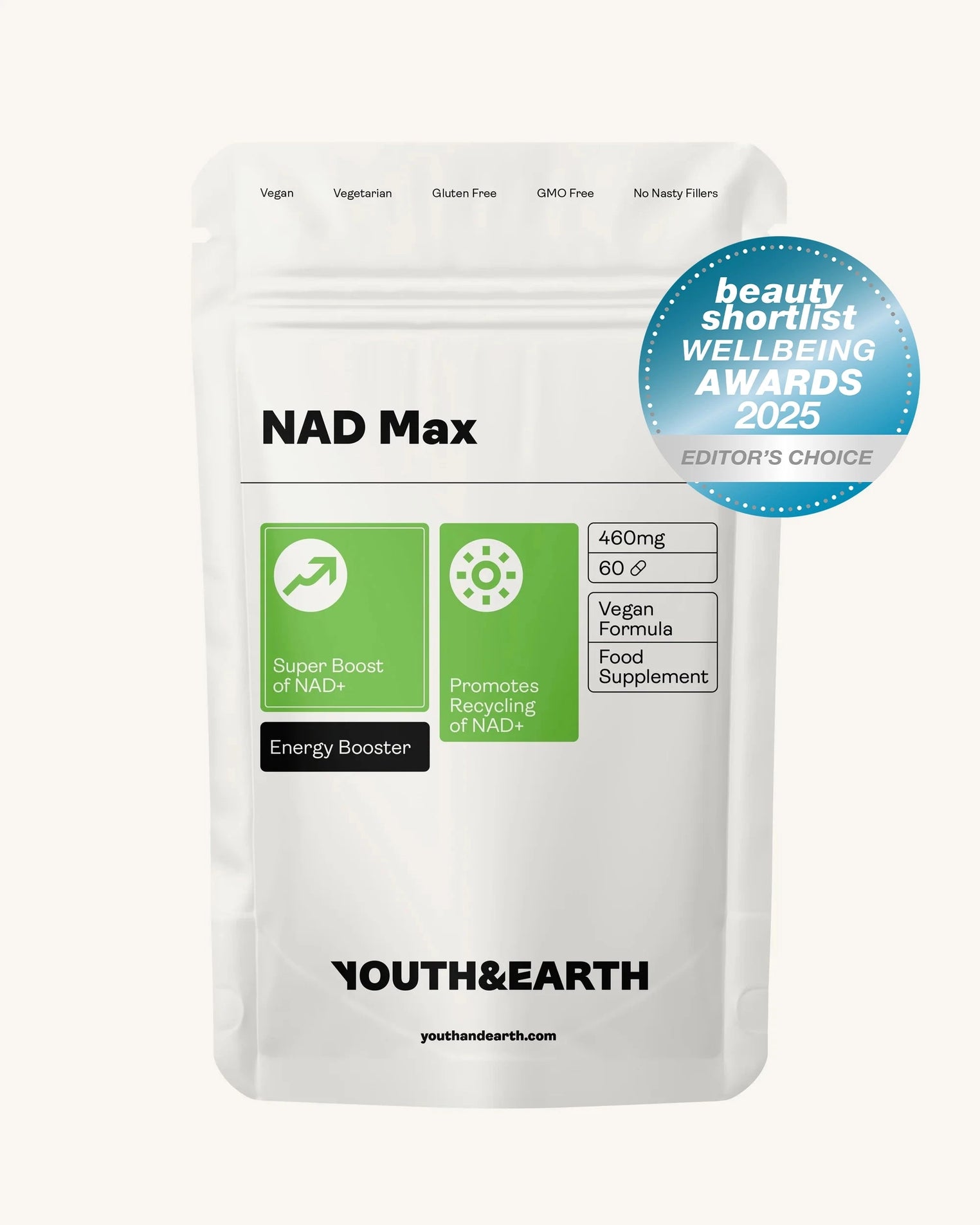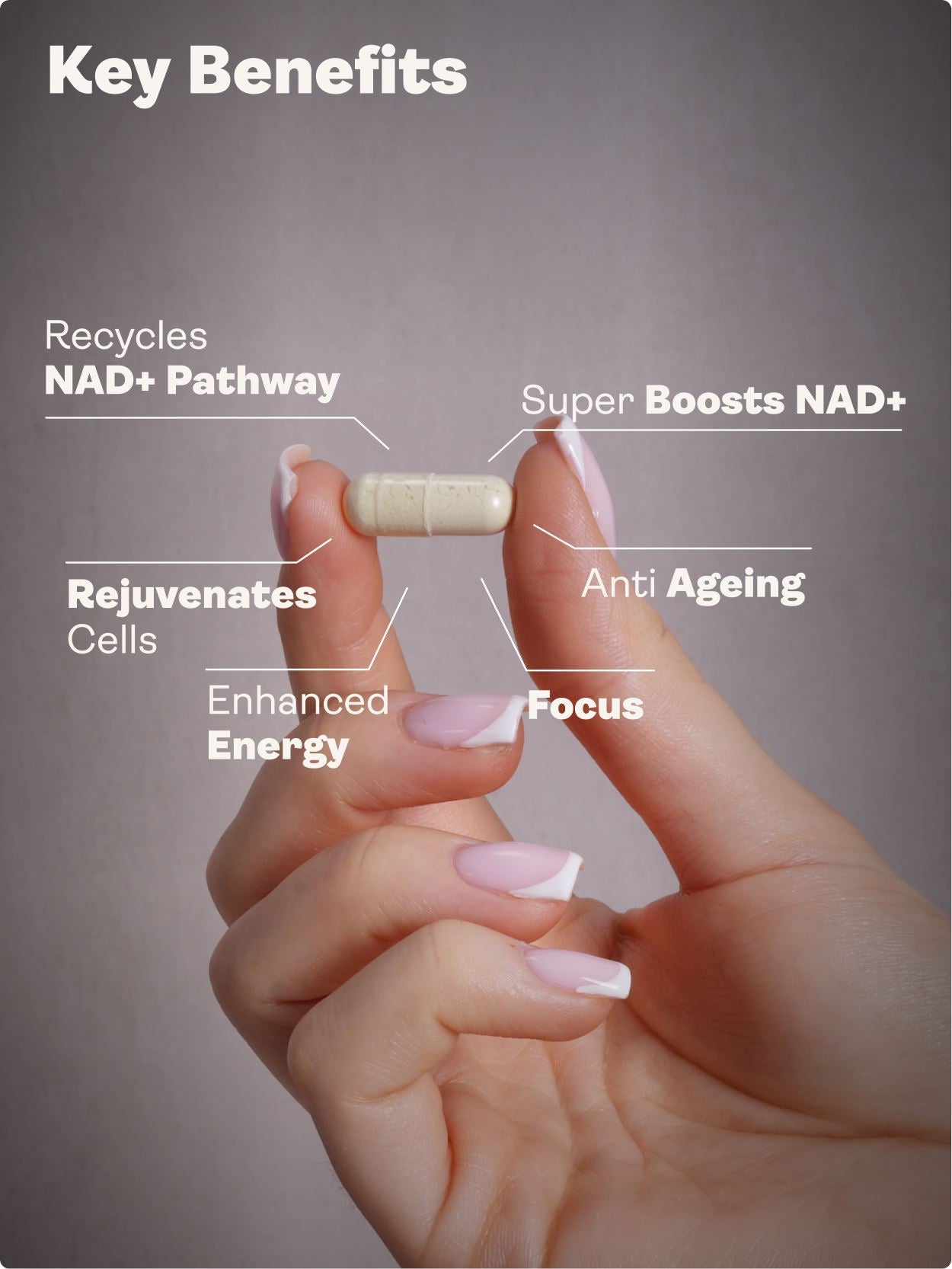TL;DR
Rapamycin inhibits the mTOR (mechanistic target of rapamycin) pathway, a central regulator of growth and metabolism. In multiple animal models, late-life and mid-life dosing extended lifespan and improved markers of healthspan. Putative human benefits include better immune calibration, lower chronic inflammation, and enhanced cellular housekeeping (autophagy). Risks include mouth ulcers, lipid elevations, impaired wound healing, and drug interactions. Longevity users typically employ intermittent, low-dose protocols plus regular labs with a qualified clinician. Lifestyle remains foundational; targeted supplements from Youth & Earth can complement healthy-ageing routines.
Science Snapshot
- Model organisms: Lifespan extension reported in mice (including late-life starts), flies, and worms; pilot work in pet dogs suggests improved cardiac function and vitality at low doses.
- Pathway target: Rapamycin primarily inhibits mTORC1 (and at higher/chronic exposure, mTORC2), shifting cellular priorities from growth to repair and stress resistance.
- Hallmarks addressed: Increased autophagy, lowered chronic inflammation, improved proteostasis and mitochondrial function, delayed cellular senescence signatures.
- Human data: Robust, long-term longevity trials are pending. Existing human use is approved for transplant and certain cancers; off-label longevity use relies on mechanistic rationale plus animal evidence and emerging observational reports.
What is rapamycin?
Rapamycin (sirolimus) is a macrolide compound discovered in soil microbes. Clinically, it has long been used to prevent organ transplant rejection and to coat coronary stents. Interest in longevity stems from its consistent ability to extend lifespan and compress morbidity in preclinical models by dialing down overactive growth signaling via mTOR.
Evidence for longevity & healthspan
Across species
- Mice: Independent labs showed lifespan extension (often in the 10–30% range) even with treatment onset in mid-to-late life. Importantly, indices of healthspan (e.g., motor function, cardiac markers) also improved.
- Flies and worms: Short-lived models confirm conserved mechanisms: reduced mTOR activity translates to better stress resistance and longer life.
- Companion dogs: Early, small studies reported improved cardiac parameters and overall vitality with low-dose rapamycin—of particular interest given shared human environments.
While cross-species consistency is compelling, human longevity trials are still needed to define effect size, ideal dosing, and long-term safety in healthy adults.
How mTOR inhibition supports healthy ageing
The mTOR pathway integrates nutrient, growth factor, and energy signals to regulate protein synthesis, cell growth, and metabolism. Ageing tissues tend to show chronically elevated mTOR activity, which can hamper cellular maintenance.
| Process | Ageing relevance | mTOR inhibition effect |
|---|---|---|
| Autophagy | Declines with age; damaged proteins & organelles accumulate | Disinhibits autophagy, improving intracellular cleanup |
| Inflammation | Chronic low-grade inflammation (inflammaging) | May reduce inflammatory signaling and immune overactivation |
| Mitochondria | Energy production falters; oxidative stress rises | Supports mitochondrial quality control and bioenergetics |
| Senescence | “Zombie” cells secrete damaging SASP factors | May slow entry into senescence and modulate SASP output |
| Proteostasis | Misfolded proteins accumulate, impairing tissues | Shifts balance toward repair and turnover |
When to start? Early vs. later-life use
Animal work suggests benefits with both mid-life and late-life initiation, with larger relative gains when starting earlier. Translating that to humans is an open question. Practical considerations:
- Risk–benefit changes with age: Younger, healthy individuals may tolerate rapamycin well but have more years to manage potential side effects; older adults may see nearer-term functional gains but often take more interacting medications.
- Lifestyle first: Exercise, diet quality, sleep, and stress control provide multi-hallmark benefits and should precede any pharmacologic strategy.
Potential benefits users report
- Skin & connective tissue: Smoother skin appearance, fewer mouth/skin breakouts (counterbalanced by risk of mouth ulcers at higher doses).
- Physical function: Better stamina and recovery; perceived “younger” exercise response.
- Cognition: Crisper focus and mental energy (subjective; formal human data pending).
- Metabolic markers: Some report improved glucose handling; others see lipid elevations—hence the need for labs and individualised adjustments.
Anecdotes are not substitutes for controlled data; use them as hypothesis-generating signals and monitor objectively.
Common longevity protocols (informational)
Not medical advice. Off-label, longevity-focused clinicians often prefer intermittent, low-dose schedules to bias toward mTORC1 inhibition while limiting mTORC2 effects:
- Once-weekly oral dosing: Typical ranges discussed publicly are ~3–10 mg once per week, adjusted for body size, labs, goals, and tolerance.
- Pulse strategies: Some employ every-10–14-day pulses, or periodic “on” and “off” blocks (e.g., 8–12 weeks on, 2–4 weeks off).
- With or without food: Consistency matters; high-fat meals can alter absorption. Follow your clinician’s instructions.
Drug interactions: Rapamycin is metabolised by CYP3A4 and transported by P-glycoprotein. Grapefruit, Seville orange, macrolide antibiotics, azole antifungals, certain calcium-channel blockers, and many other drugs can raise or lower levels. Review your full medication/supplement list with your prescriber.
Risks, side effects & who should avoid
| Potential issue | Details & mitigation |
|---|---|
| Mouth ulcers (stomatitis) | Common at higher exposure; often mitigated by dose adjustment, pulsing, or topical oral care strategies. |
| Lipid elevations | Monitor LDL-C, ApoB, triglycerides. Nutrition, exercise, and—in some cases—lipid-lowering agents may be considered. |
| Impaired wound healing | Pause before/after surgery per physician instructions. |
| Infections | High or continuous dosing can suppress immunity. Intermittent, low-dose protocols aim to minimise this risk; still, monitor closely. |
| Glucose/insulin changes | Mixed reports; track fasting glucose, HbA1c, and insulin or HOMA-IR. |
| GI upset, rashes, edema, headaches | Usually dose-related; discuss persistent symptoms with your clinician. |
Generally avoid unless advised by a specialist: pregnancy or breastfeeding; active infection or poorly healed wounds; uncontrolled diabetes; severe hepatic or renal disease; recent major surgery; known hypersensitivity to macrolides/sirolimus; complex polypharmacy with major CYP3A4 interactions.
Monitoring checklist & follow-up labs
- Baseline: CBC with differential; CMP (liver/kidney); fasting lipids (LDL-C or ApoB, TG, HDL-C); fasting glucose + HbA1c (± fasting insulin); hs-CRP; urinalysis; blood pressure; body composition if available.
- Follow-up (e.g., 6–12 weeks after start/adjustments, then every 3–6 months): Repeat the above; consider sirolimus trough levels if clinically indicated; track symptoms, oral ulcers, exercise tolerance, sleep, and recovery.
- Procedures: Coordinate pauses around elective surgery and dental work per your prescriber.
Lifestyle & adjuncts that pair with rapamycin
- Training: Resistance training 2–4x/week and zone 2 + VO₂ intervals support muscle, insulin sensitivity, and cardiovascular health.
- Nutrition: Protein-sufficient, fibre-rich, minimally processed diet. Some use time-restricted eating or periodic low-calorie phases to reinforce autophagy.
- Sleep & stress: 7–9 hours nightly, light exposure in the morning, stress-reduction practices to lower allostatic load.
- Supplements: Targeted options can complement healthy-ageing strategies. Youth & Earth formulations that support mitochondrial function, cellular repair, and metabolic health can be layered onto a lifestyle-first plan. Discuss specific products and timing with your clinician to avoid interactions.
How rapamycin compares to other longevity tools
| Intervention | Primary target | Strength | Watchouts |
|---|---|---|---|
| Rapamycin | mTORC1 (repair > growth) | Cross-species lifespan & healthspan data; intermittent dosing possible | Lipids, mouth ulcers, wound healing, drug interactions |
| Metformin | AMPK/mitochondrial signaling | Metabolic benefits; low cost; long clinical history | GI upset; potential blunt of training adaptations in some |
| Acarbose | Post-prandial glucose blunting | Glycaemic control; some lifespan signals in mice | GI gas/bloating; adherence |
| Fasting/CR | mTOR/AMPK/ketosis/autophagy | Multi-hallmark; free | Not for pregnancy, underweight, eating disorders; performance tradeoffs |
| Exercise | All-hallmark intervention | Mortality reduction; function; cognitive benefits | Injury risk if poorly programmed |
FAQ
Is rapamycin legal to use for longevity?
Rapamycin is a prescription medicine approved for specific indications (e.g., transplant, certain cancers). Off-label use for longevity requires a prescribing clinician who can assess risks, interactions, and monitoring needs.
Do I need weekly dosing?
Weekly pulsing is common in longevity circles to prioritise mTORC1 inhibition while limiting continuous exposure. Exact schedules and amounts vary. Never start or adjust without professional oversight.
Will rapamycin make me immunosuppressed?
At high or continuous doses, yes—this is why it’s used in transplant medicine. Longevity strategies typically use intermittent, lower total exposure. Even so, attention to infections, wound healing, and vaccinations is important.
Can I take rapamycin with supplements?
Many people do, but interactions are possible. Review everything (including grapefruit and Seville orange) with your clinician. Youth & Earth supplements are designed to support healthy-ageing basics and can complement a lifestyle-first plan.
How quickly would I notice effects?
Subjective changes (skin, recovery, energy) can appear within weeks. Objective changes (lipids, inflammatory markers, body composition) should be measured over months. Longevity effects are long-horizon by definition.
Glossary
- mTOR (mechanistic target of rapamycin): A nutrient-sensing kinase controlling growth and metabolism; overactivity is linked to ageing biology.
- mTORC1 / mTORC2: Two complexes of mTOR with different partners and downstream effects; rapamycin primarily inhibits mTORC1 with intermittent use.
- Autophagy: Cellular recycling that degrades damaged components; generally declines with age.
- Healthspan: Years lived in good health and function, not merely total lifespan.
- Off-label use: Prescribing a medicine for an indication not formally approved by regulators.
SEO Excerpt
Rapamycin is the most studied pharmacologic mTOR inhibitor for healthy ageing. This guide explains the evidence across species, how rapamycin supports autophagy and lowers inflammation, common longevity p



